|
Out of the book “Signs – Letters – Alphabets” by Csaba Varga
To order the book see:
www.createspace.com/3389848
1)
A couple of years ago, in today’s France, archaeologists excavated
two large Neanderthal sites that revealed signs of craftsmanship.
Earlier than that, a tombstone erected by Neanderthal people was
discovered – it had an ogham kind of sign carved on it. They buried
their dead covered with flowers, the same
way we do it these days. The mental capacities of the Neanderthal
people can be especially well figured out with the help of this
flute-fragment:
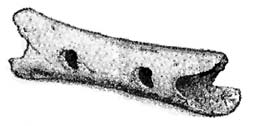
A Neanderthal man carved
this approx. 43-82.000-year-old flute.
Although the flute made
of the bones of the cave-bear is badly damaged, the position of the
fragmented holes between the two intact holes can be easily
discerned. And this is more than enough to claim that the flute is
not tuned according to the natural pentatonic scale but a
minor-version of the modern diatonic scale. Such a scale cannot be a
twist of fate: it had to be created. (Even if it is the result of
trial and error, decisions had to be made: “This is where the hole
should be!”) Bob Fink’s acoustic analysis follows in the next
picture:
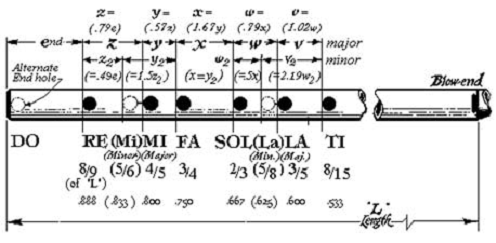
The position of the
holes determines the producible sounds.
The above analysis shows
that this flute could indeed emit brilliant melodies. Sure we are
surprised that music has been with us since the Neanderthal man, but
what is more astonishing is that these human beings actually based
their music on an artificial scale.
2)
The Canadian archaeologist Olga Schöffer found a complete wardrobe
of women’s Clothing (80 pieces which are around 29,000 years old) at
a location, which is today Czech republic.
This means harvest, flax processing, weaving, measure units and
manufacturing, not to mention the
occasions they were made for.
3)
In Iran a 2000 kilometres underground water channel about 10,000
years old.
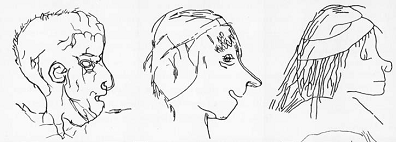
4)
The drawings above are on the same stone and were made more than
14.000 years ago.
They were found in La Marche in France. (Paul G. Bahn, Prehistoric
Art.)
Who could prove that this pictures just happened to slip out of the
hands of a primitive individual just walking by? I would honestly
like to place a paintbrush in the hands of a modern, educated person
(lawyer, doctor, historians or politician) and see the results. It
might be less than satisfying unless we chose someone who possesses
the talent of illustration.
5)
Prehistoric “community buildings”:
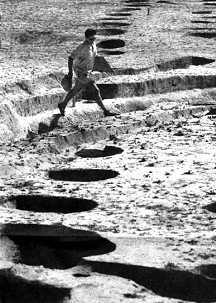
Unearthing of a large
bridge that is more than 5.000 years old.
(Kiskundorozsma, in present day Hungary.) Csaba Szalontai,
archaeologist.
(Photo: MTI)
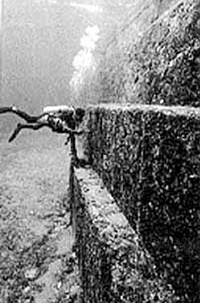
This pyramid was found
near the isle of Okinava
70 meters below water. Over30.000 years old?

Signs-
Letters - Alphabets
Anima Könyv:
Signs-Letter-Alphabets
|